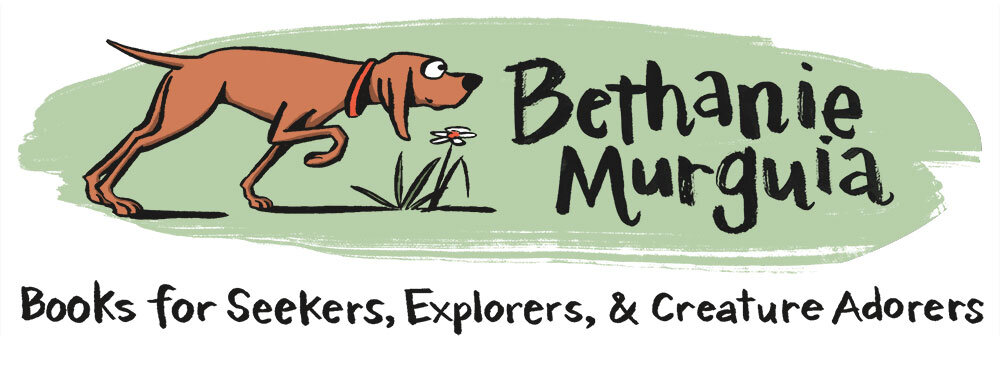Admittedly, I learned this lesson long before I started on this project. Watercolor is very unforgiving. You can't go back in and "noodle around" with it until it does what you want. Thus, many of the paintings for this book were done multiple times. Yes, this may point to shortcoming(s) on my part, but ever since I heard Jon Muth's editor talk about his multiple takes on paintings, I feel pretty darn good about doing as many attempts as it takes. :)
Following is a case study of one spread from thumbnail to finished painting. I begin with quick thumbnails and character sketches. My initial crow was too friendly, so you'll see he becomes more intimidating as time goes on. There are a few color studies: I was playing around with tone and value. Should the crow be darker than the background or vice versa? I was very excited when I came up with the orange legs/feet. I think they are the perfect complement to the cool darkness in the rest of the painting. I think there were 2 or 3 more interim paintings before I arrived at the final piece (they must have been sacrificed to the 4-year old who likes to show me what I should have done with my paintings).



Following is a case study of one spread from thumbnail to finished painting. I begin with quick thumbnails and character sketches. My initial crow was too friendly, so you'll see he becomes more intimidating as time goes on. There are a few color studies: I was playing around with tone and value. Should the crow be darker than the background or vice versa? I was very excited when I came up with the orange legs/feet. I think they are the perfect complement to the cool darkness in the rest of the painting. I think there were 2 or 3 more interim paintings before I arrived at the final piece (they must have been sacrificed to the 4-year old who likes to show me what I should have done with my paintings).

















